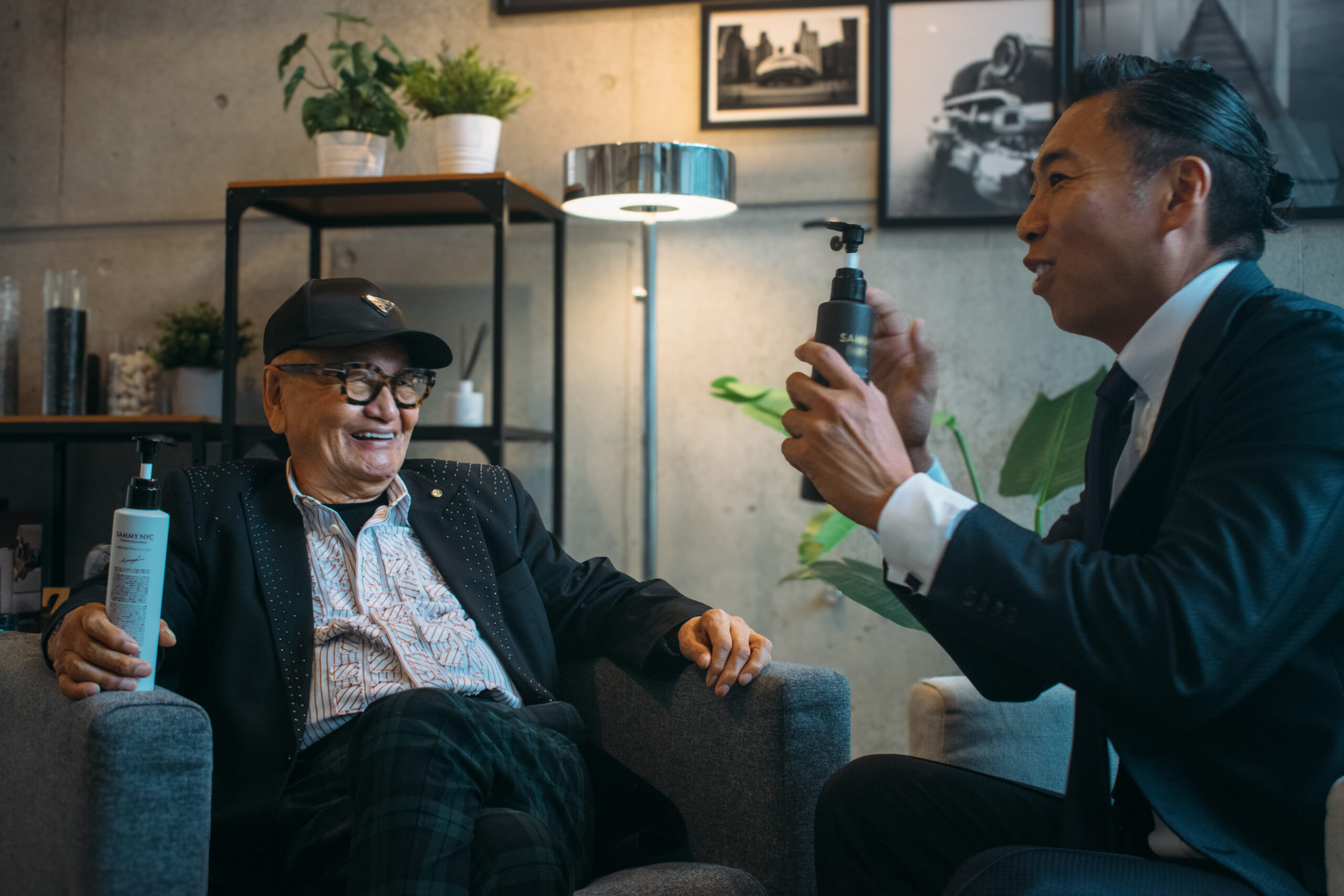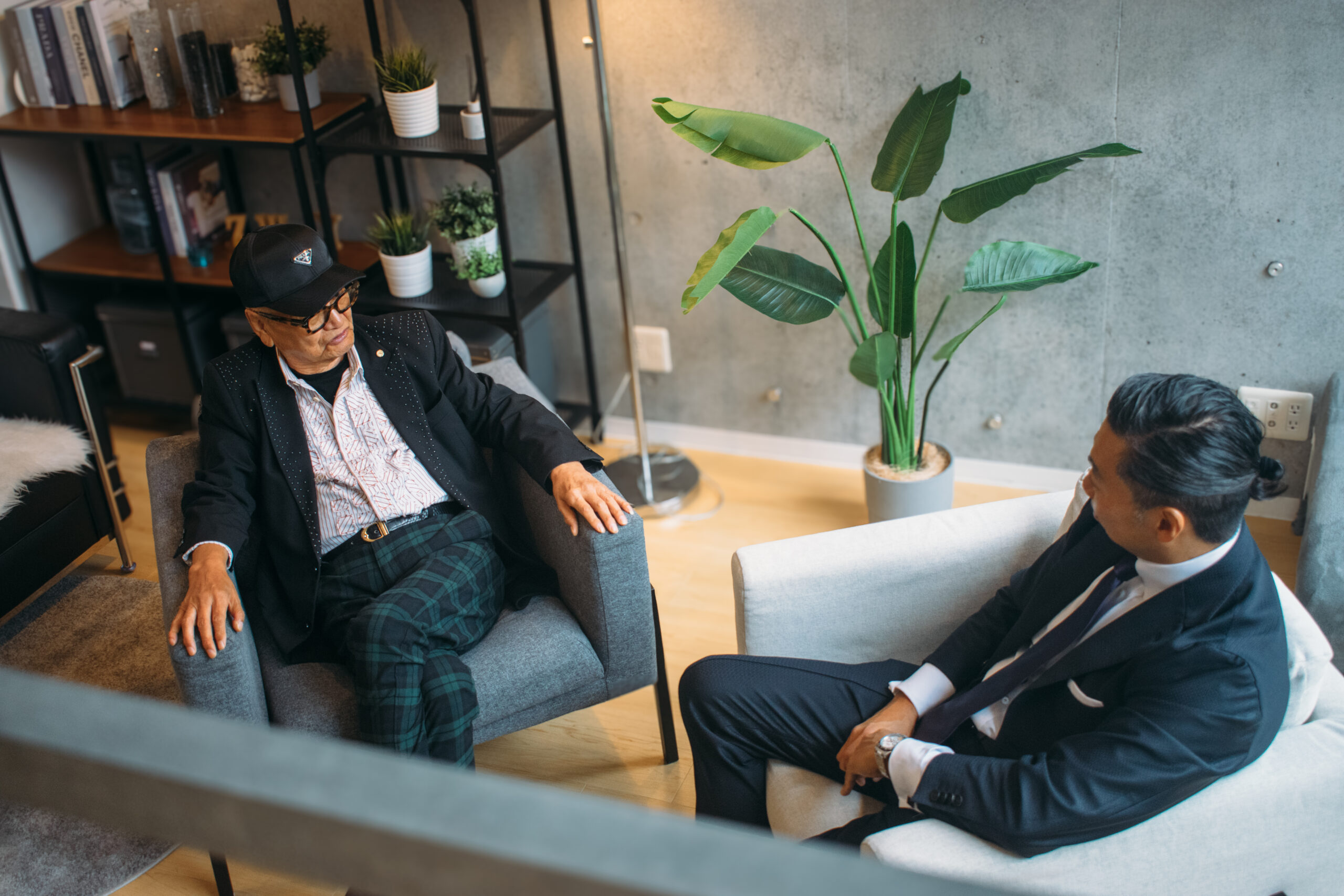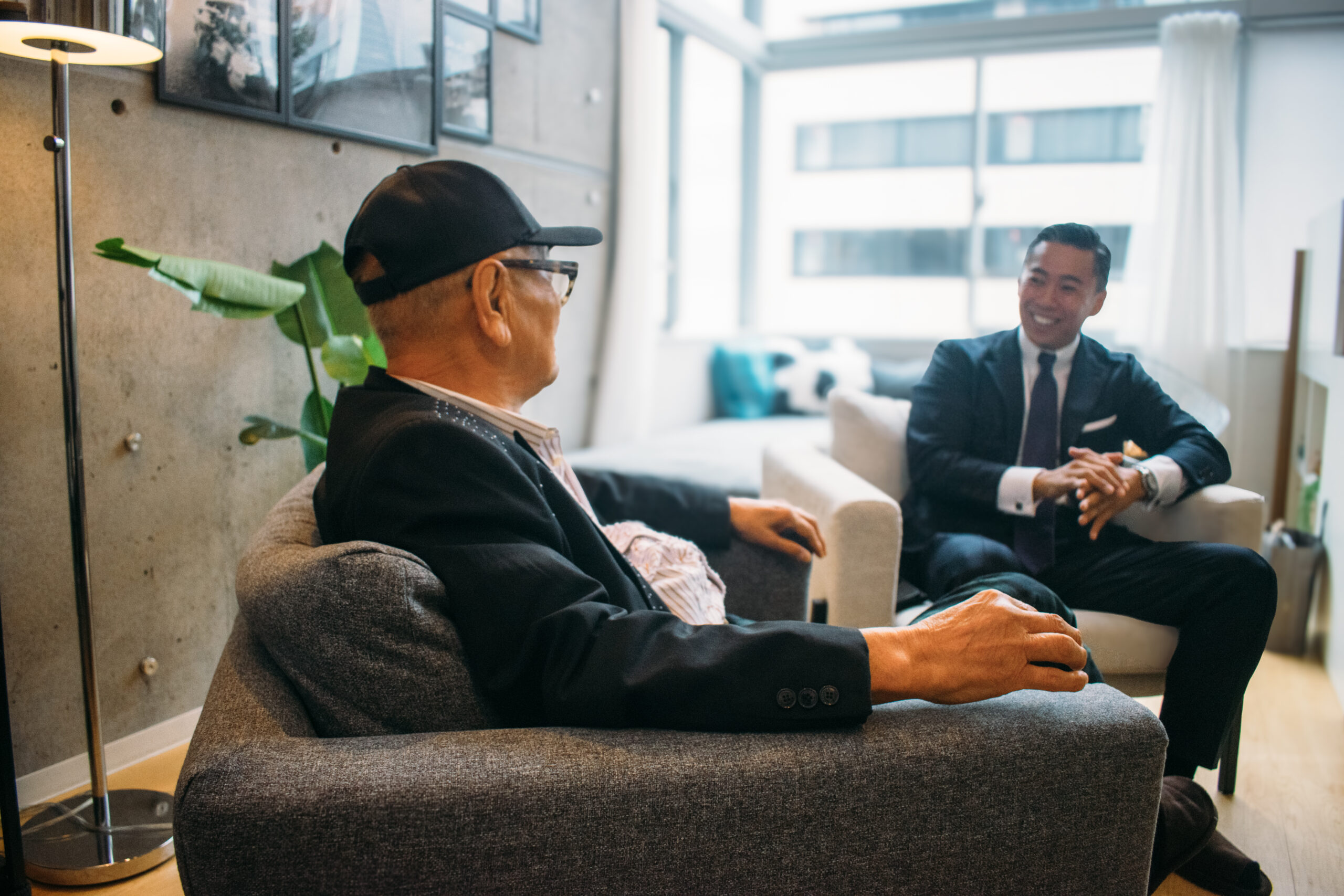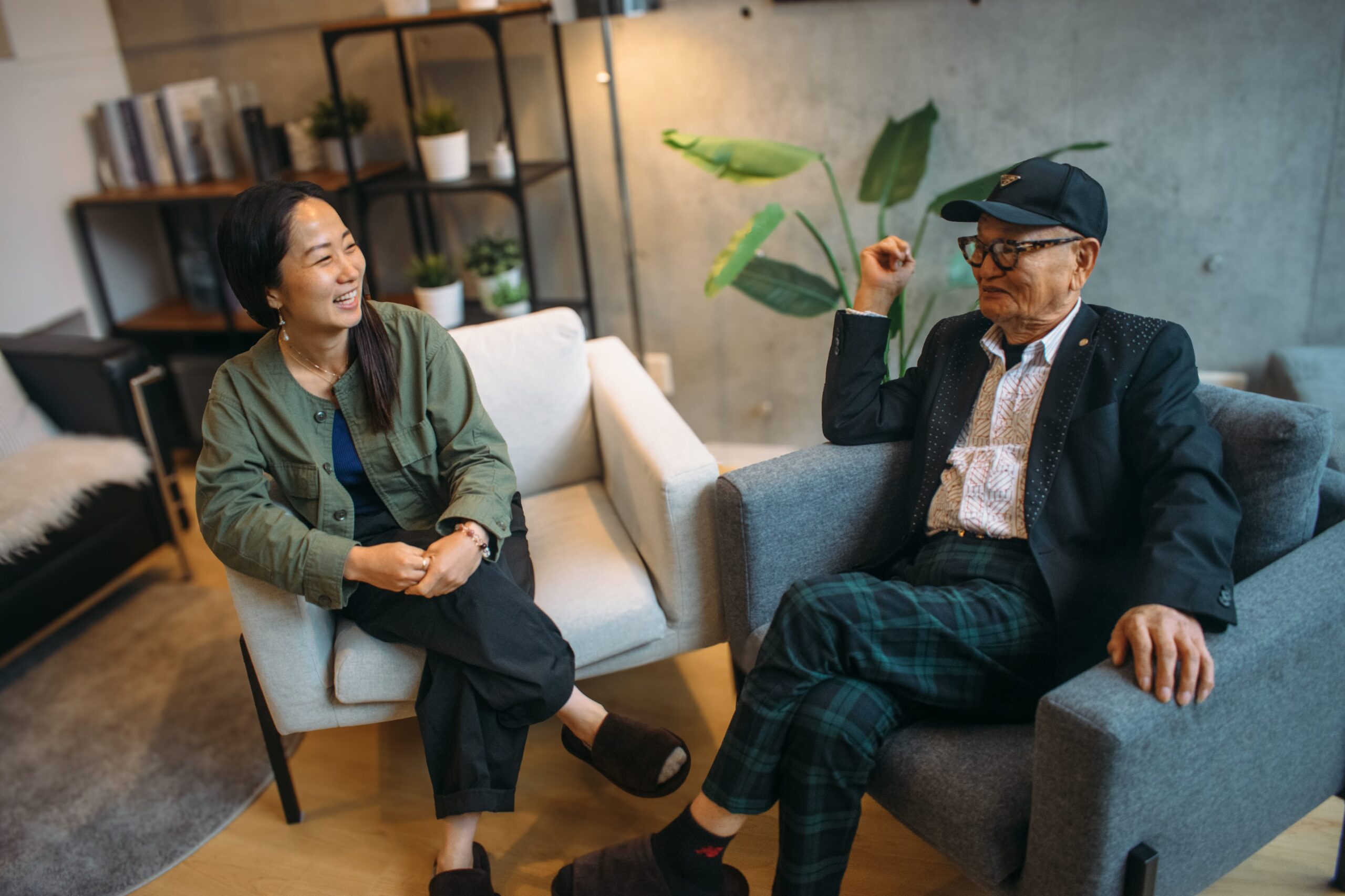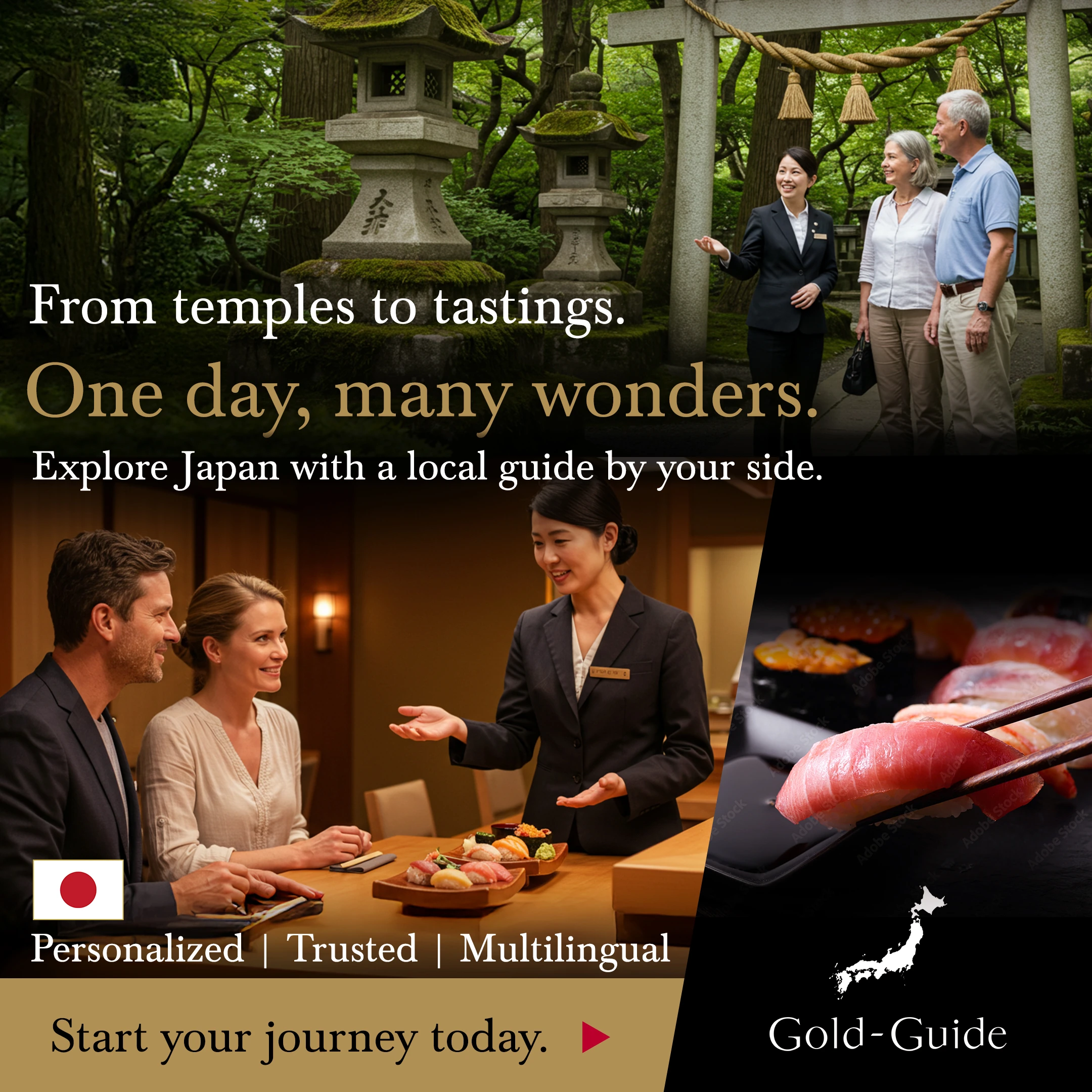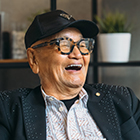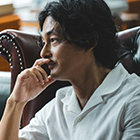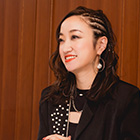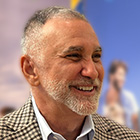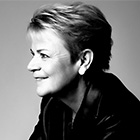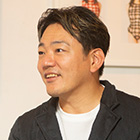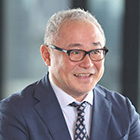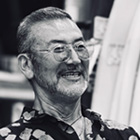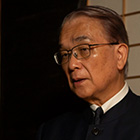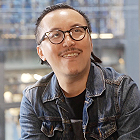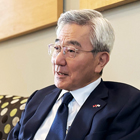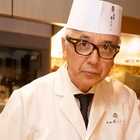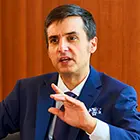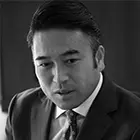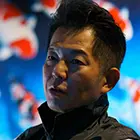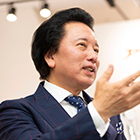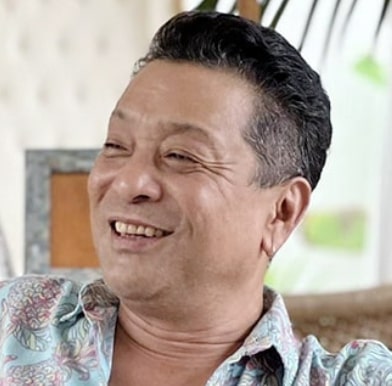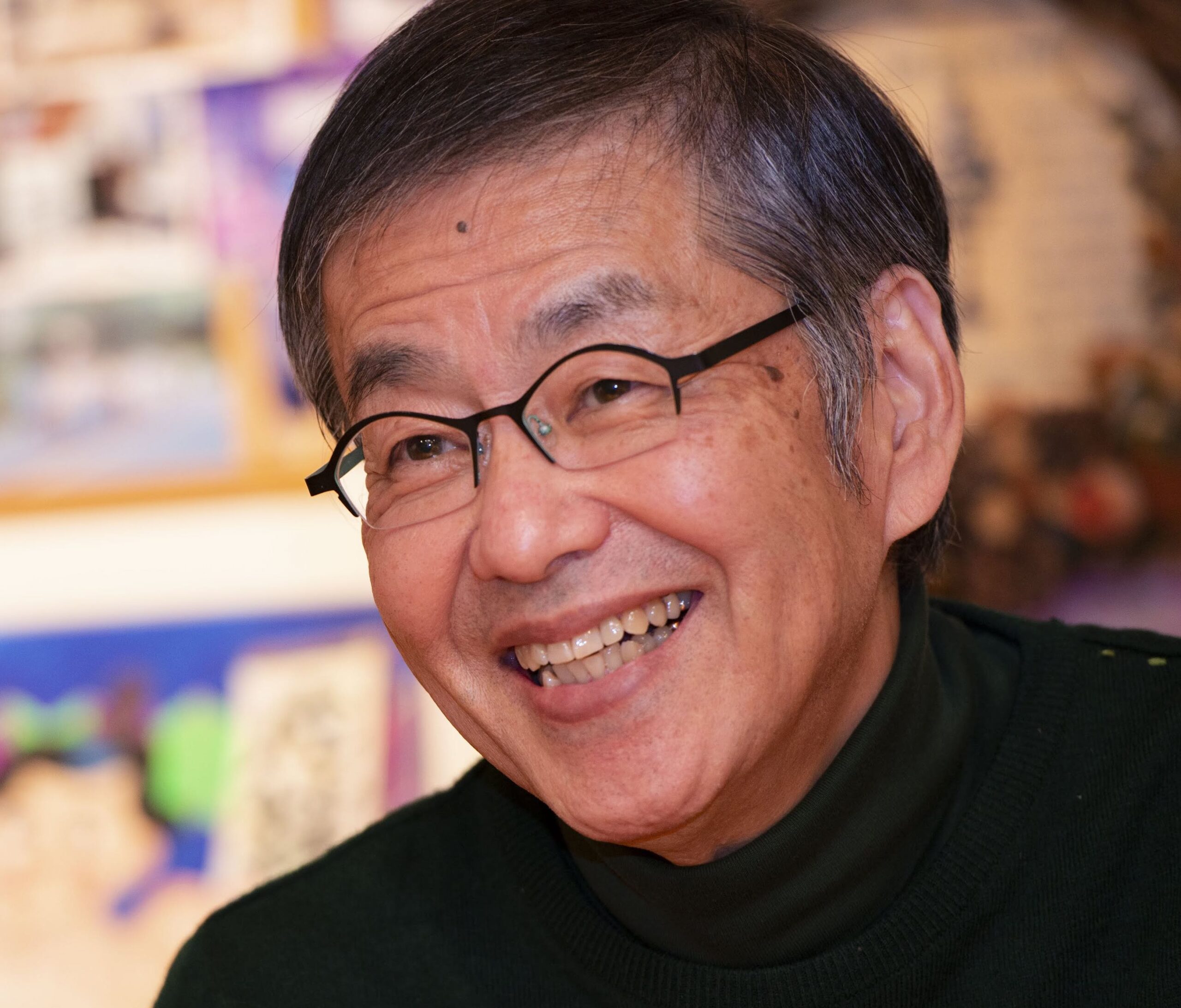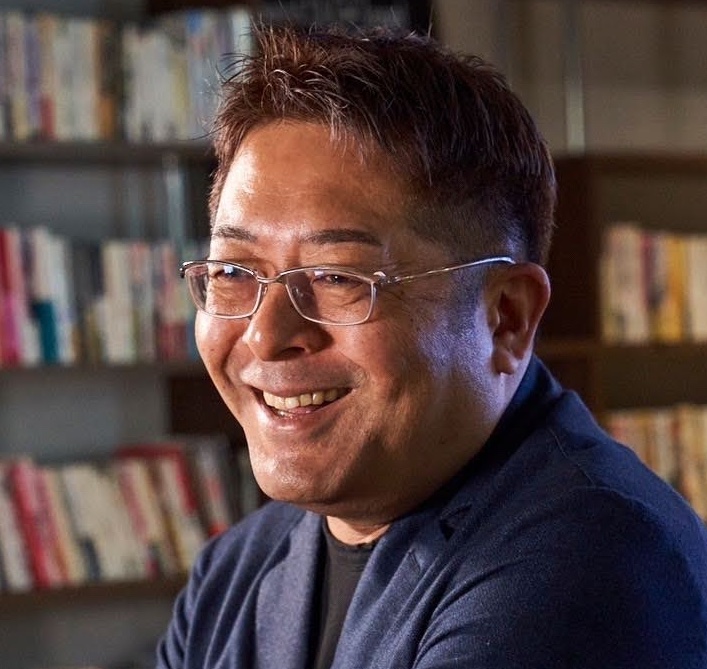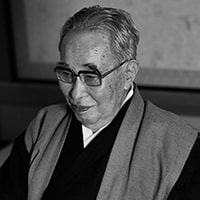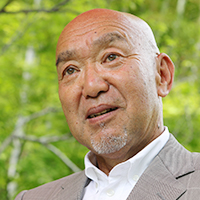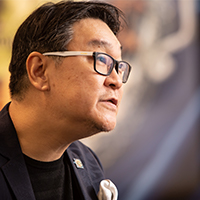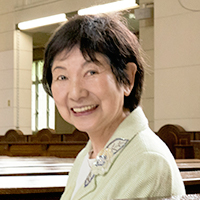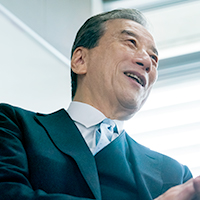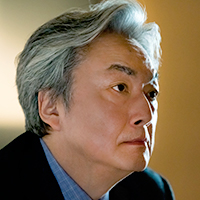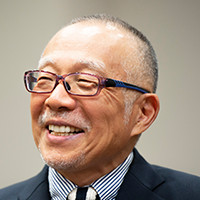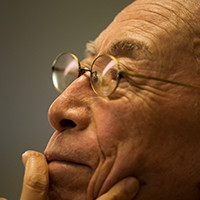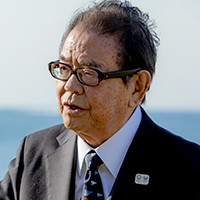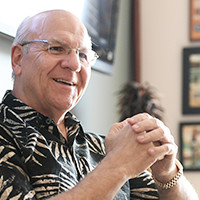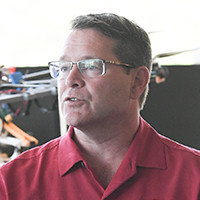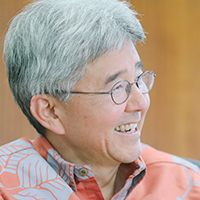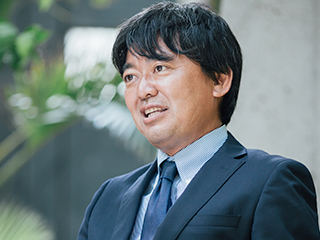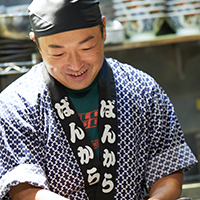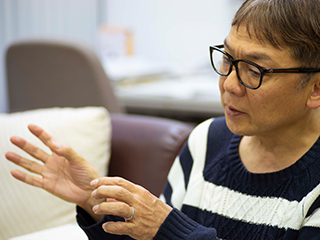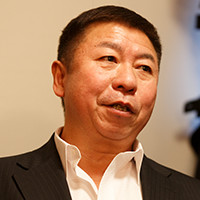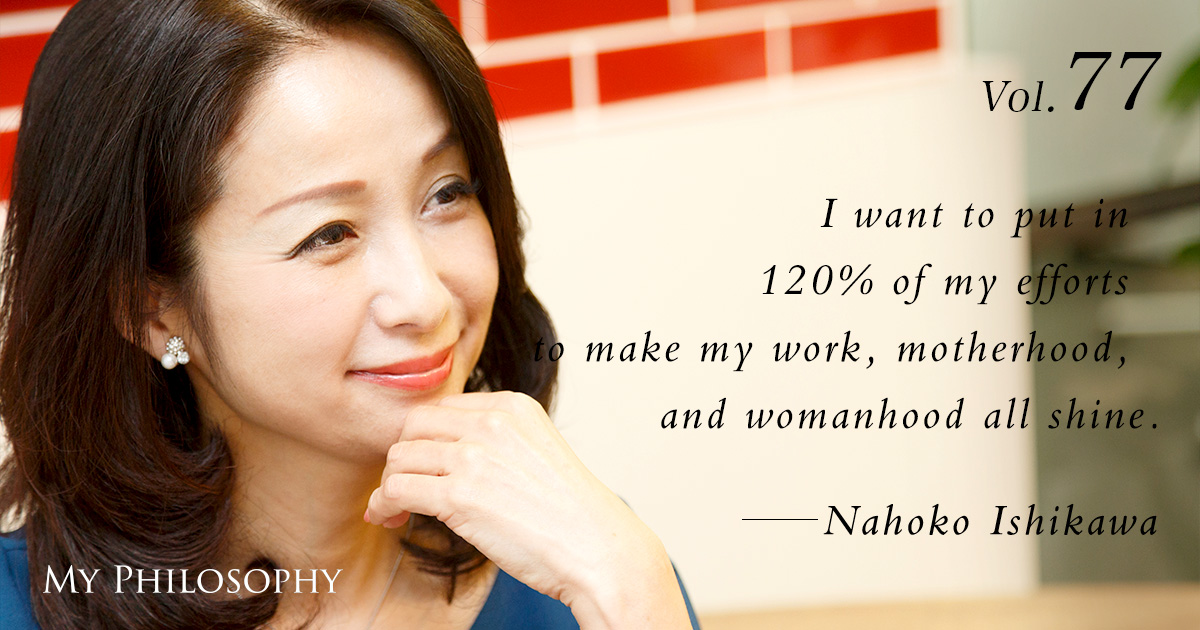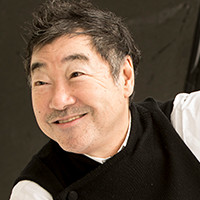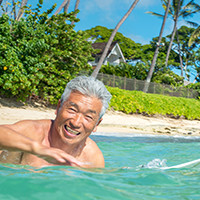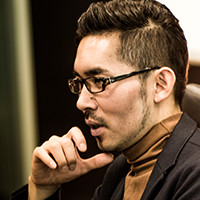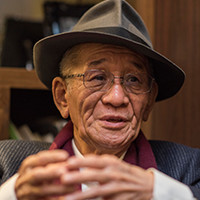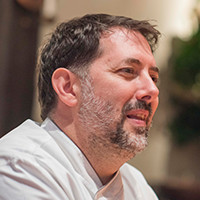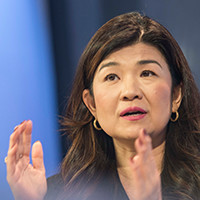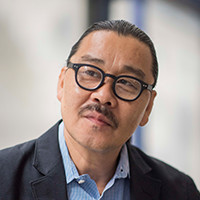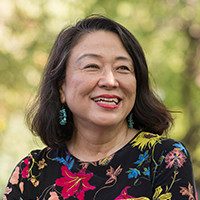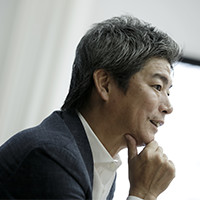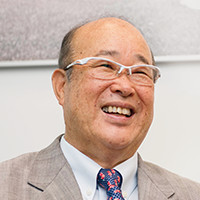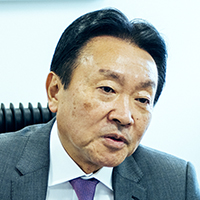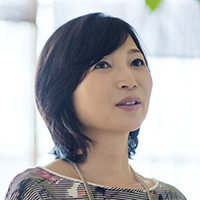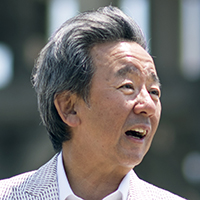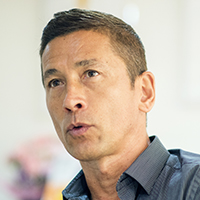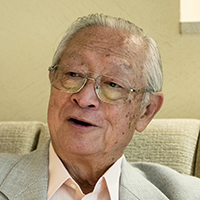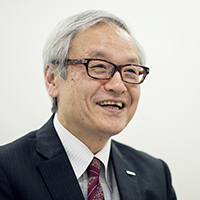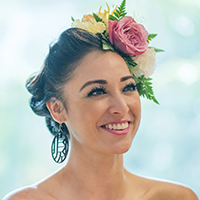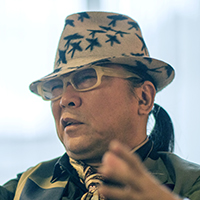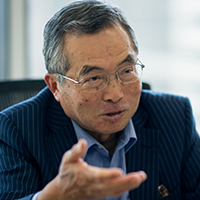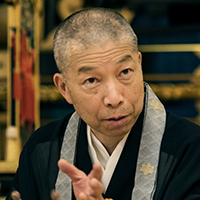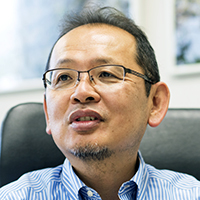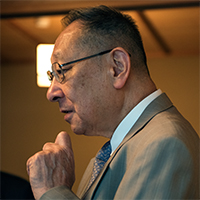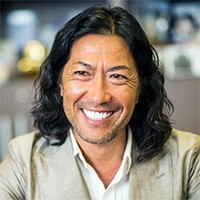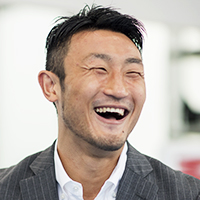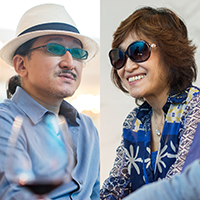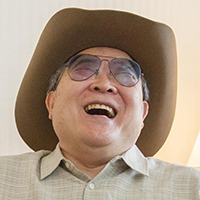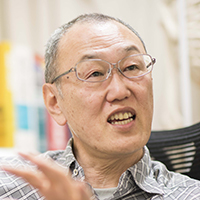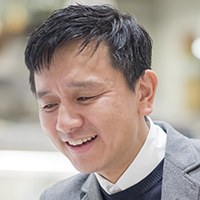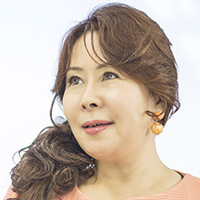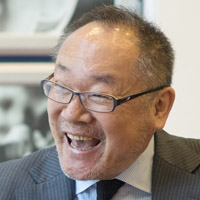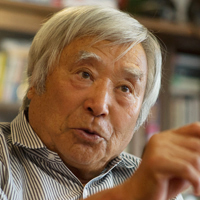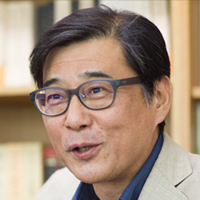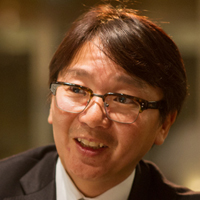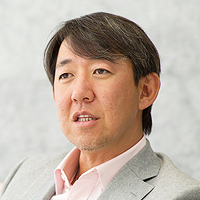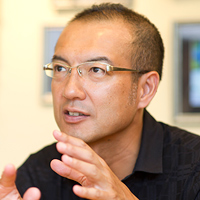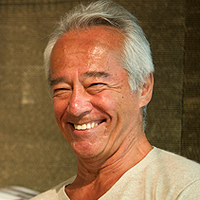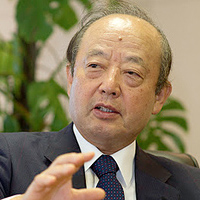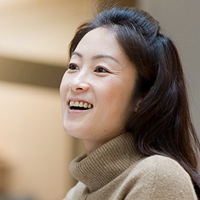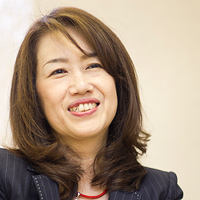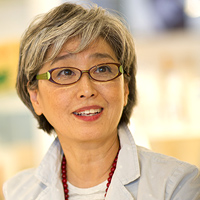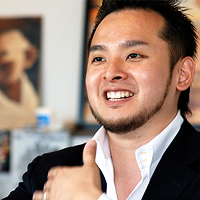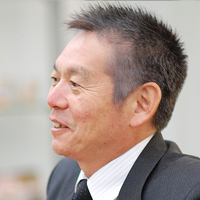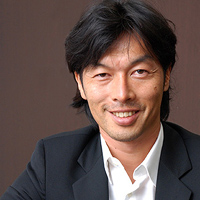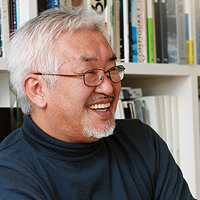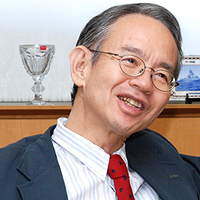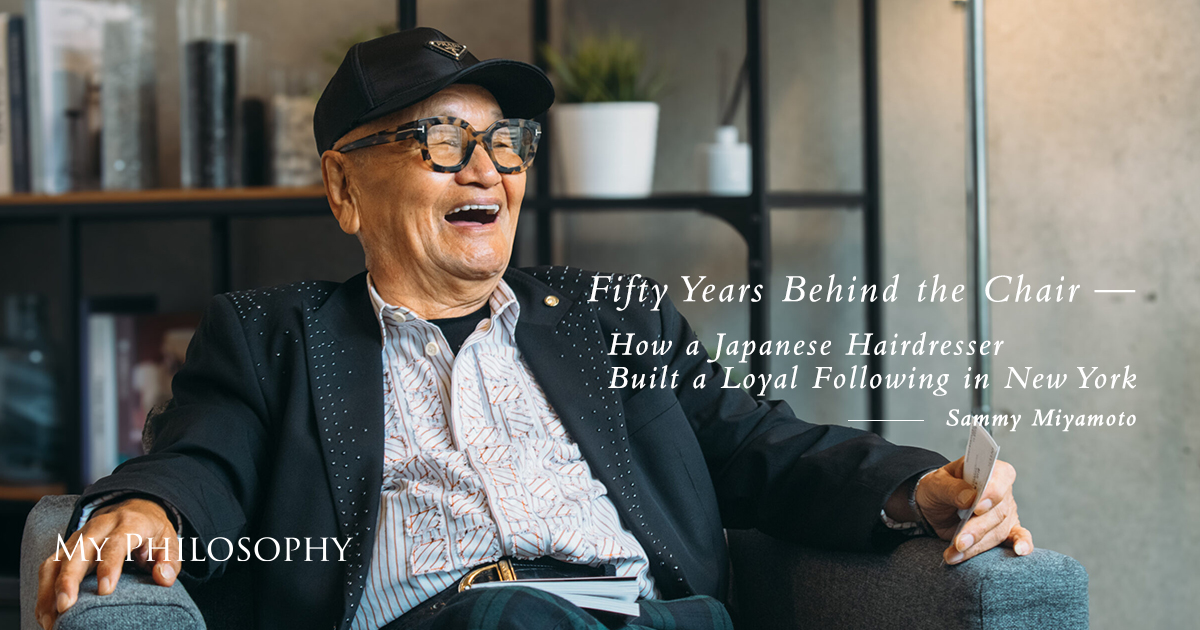
The fierce competitive spirit forged during his apprenticeship in Shimane, the refined technique honed at Osaka’s prestigious “Momotaro,” and the courage to venture alone into New York at its most turbulent. He was among the first to introduce the unisex-salon concept, building a thriving business through a word-of-mouth–driven “repeat design” that kept clients returning for over half a century.
Behind this success lies the pride of a true craftsman, the human strength to “polish one’s luck,” and a product philosophy grounded in science and adapted to the shifting times.
In the age of AI, it is those who can deliver something truly *real* who will be chosen in the end—this is the philosophy of Sammy Miyamoto.
Profile
Vol.121 Sammy Miyamoto
Hairstylist & Entrepreneur / President, “momotaro salon”
Born in 1947 in Kanagi Town, Shimane Prefecture (now Hamada City), he was the youngest of seven siblings. Following his family’s motto—“First, master a trade”—he entered the world of barbering and cosmetology. After enduring a demanding live-in apprenticeship in Shimane, he further refined his skills at Osaka’s prestigious “Momotaro” salon, eventually winning the Asian Championships.
In 1972, he moved to the United States as the first manager of the newly opened New York branch. In a Manhattan still marked by poor public safety and harsh living conditions, he became an early pioneer of unisex salons and introduced Japanese straight perms long before they were widely known. By building a business model driven by introductions and repeat clientele, he steadily expanded his customer base.
He became independent in 1977 and assumed the presidency of “momotaro salon,” which grew into a salon beloved by many prominent figures, including Konosuke Matsushita, Shigeo Nagashima, and Sadako Ogata. Over the decades, he contributed significantly to the training and exchange of beauty professionals between Japan and the United States, as well as to the growth of the Japanese beauty community in New York.
He also founded and served as president of the New York Shimane Kenjinkai (2001–2009), devoting himself to community-building and cultural exchange. In recognition of these achievements, he received the Commendation from the Consul General of Japan in New York in 2023, together with his haircare brand “SAMMY. NYC.”
momotaro | HAIR & BEAUTY SALON NEW YORK
https://momotaro-nyc.com/
From Shimane to the World
— A fierce will, “Not to Lose” drove me forward

“First, learn a skill.”
That was the motto in my family.
I was born in Shimane Prefecture, the youngest of seven children.It was just after the war, a time when even getting enough to eat was difficult. My school years were really tough. You couldn’t call the life we lived a comfortable one.
That’s why I believed that if I mastered a skill with my own hands, I would never go hungry.
That conviction is what led me into the barbering and beauty industry.
There was one thing I could never compromise on:
“If I’m going to do something, I absolutely refuse to lose to anyone.”
I’ve always had a strong competitive streak.
I first trained in Shimane in what you might call the traditional live-in apprenticeship system.
Looking back now, it was grueling. Truly harsh.
I’d get up at 4 a.m., carry firewood, heat the water, and once everything was ready, I would clean the shop. After work, I sharpened the scissors we had used. If the blades weren’t right, I’d be scolded, and if I didn’t sharpen them properly, it would affect our work the next day. In winter, my hands would crack from the cold and bleed. On top of that, I would practice through the night to improve my technique.
I lost count of how many times I asked myself, “Why did I choose this industry?”
More than dexterity, what I needed was the stamina to keep going. What I learned there was this: “A refusal to lose is capital.”
“I’m going to be Number One!”
— To Osaka, and then New York
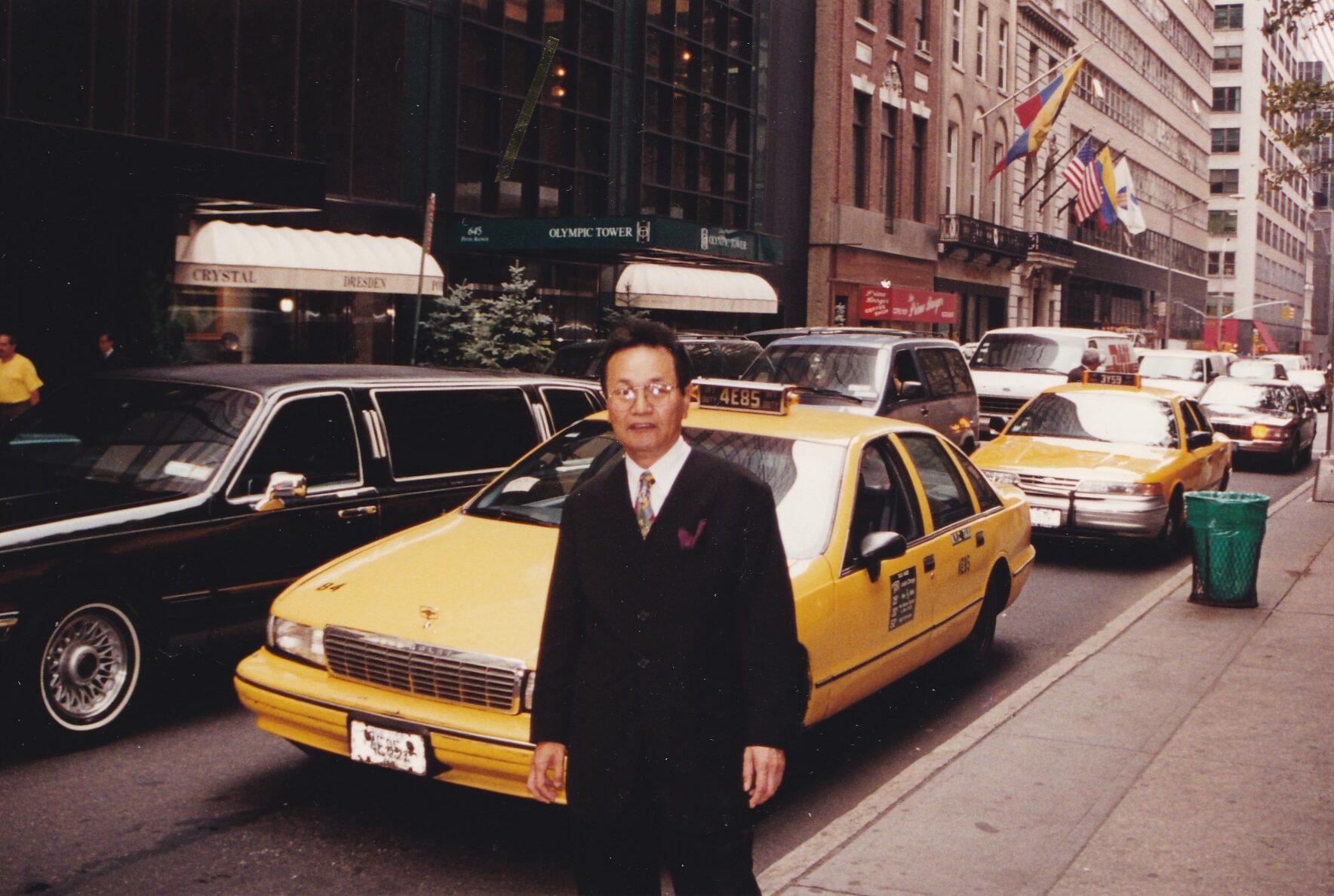
Because I was always thinking, “I’m going to be number one!”, I decided to move to Osaka.
In Japan, if you wanted to make it big, it had to be Osaka or Tokyo.
At that time, when you talked about salons in Osaka, the long-established “Momotaro” was the place. There, I gave everything I had to “be number one” to start with. I simply refused to give up.
Two or three years later, I suddenly realized I was the one doing the training. I went on to win the Asian Championships as well. My unwillingness to lose is what pushed me that far.
My father was vehemently opposed. He called it “a dangerous place.” But I had this strong conviction that I would never become someone significant if I stayed in Japan. I wanted to be the best in the world. That determination made me decide to go, and I persuaded my father.
He later told me that he felt as if he were sending his son off to war. He said, “Only for one year. After that, you must come back home.”
The second Osaka Expo was held just recently, but I went to the United States shortly after the first Expo in Osaka.
Back then, things were completely different from today. The exchange rate was 360 yen to the dollar. In the underground market, dollars traded at around 400 yen. Flights from Haneda to New York went via Anchorage.
And New York was extremely unsafe.
The subway was terrifying, and Central Park at night was the kind of place you might not come back from if you went in. Everyone told me, “Be careful,” so I hardly went out at all. My life was just going back and forth between the shop and where I slept.
The Innovation of “Unisex”
— Embracing What’s New
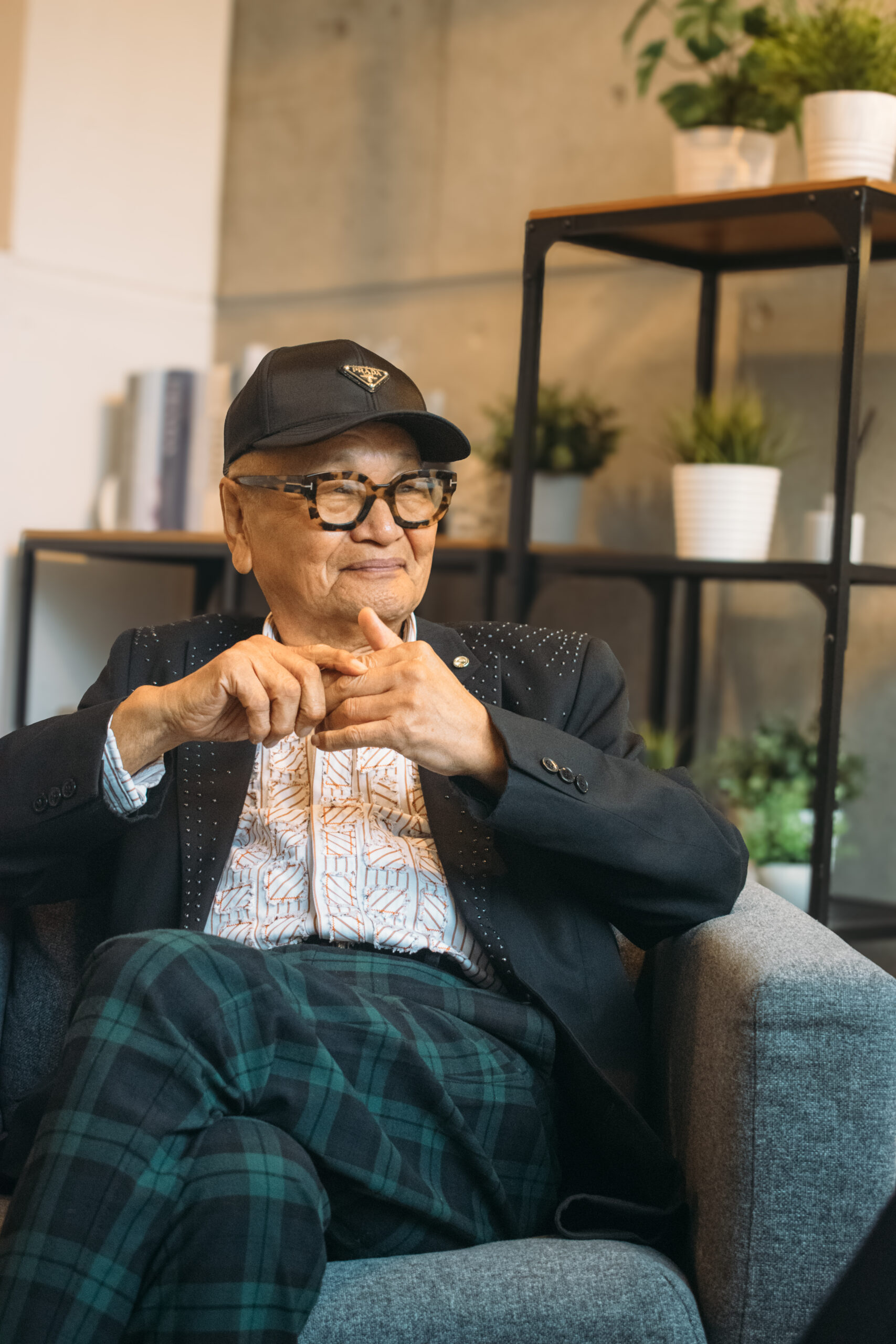
There were three of us who went to New York together. One became so mentally strained that he went back to Japan, and another couldn’t get along with the first owner and quit. Somehow, though, the first owner and I were on the same wavelength.
That one-year assignment passed in the blink of an eye. The reality was nothing like what I had imagined. I was nowhere near satisfied with what we had achieved. I felt I couldn’t possibly go back to Japan in such a half-finished state. New tasks kept appearing—“I need to do this, and I need to do that.” I kept telling myself, “If I crumble here and run back to Japan, that won’t do. I have to get this off the ground and prove I can make it work.”
I also wondered, “Why did I come all the way to New York just to go through so much hardship?” Maybe I could have had a much easier life if I had stayed in Japan. In the end, it took about three years before the business really found its footing.
At the same time, I proactively brought in new ideas. I was the one who introduced the concept of a “unisex” barbershop.
Originally, we only cut men’s hair. But I realized, “This isn’t going to work,” so we shifted to a format where anyone—men or women—could walk in, and we offered total care.
I was also the first to bring Japanese straightening perms to the U.S. I was determined to straighten those tightly curled American hairstyles.
People always want what they don’t have. Those with straight hair want curls; those with natural curls want straight hair. The straightening perm was a big hit.
Word of mouth spread, and our reputation grew rapidly.
Even as I embraced new things, I continued to cherish the old. “Objects have a soul.” That’s a distinctly Japanese way of thinking.
Back in my Osaka days, I was always told, “Treat your scissors with absolute care.” Put your soul into them. Sleep with them beside you at night. If you do, they’ll show you the answers you need.
To this day, I still treasure and use a single pair of scissors as if it were a living partner.
True Customer Satisfaction Is Measured by Repeat Visits
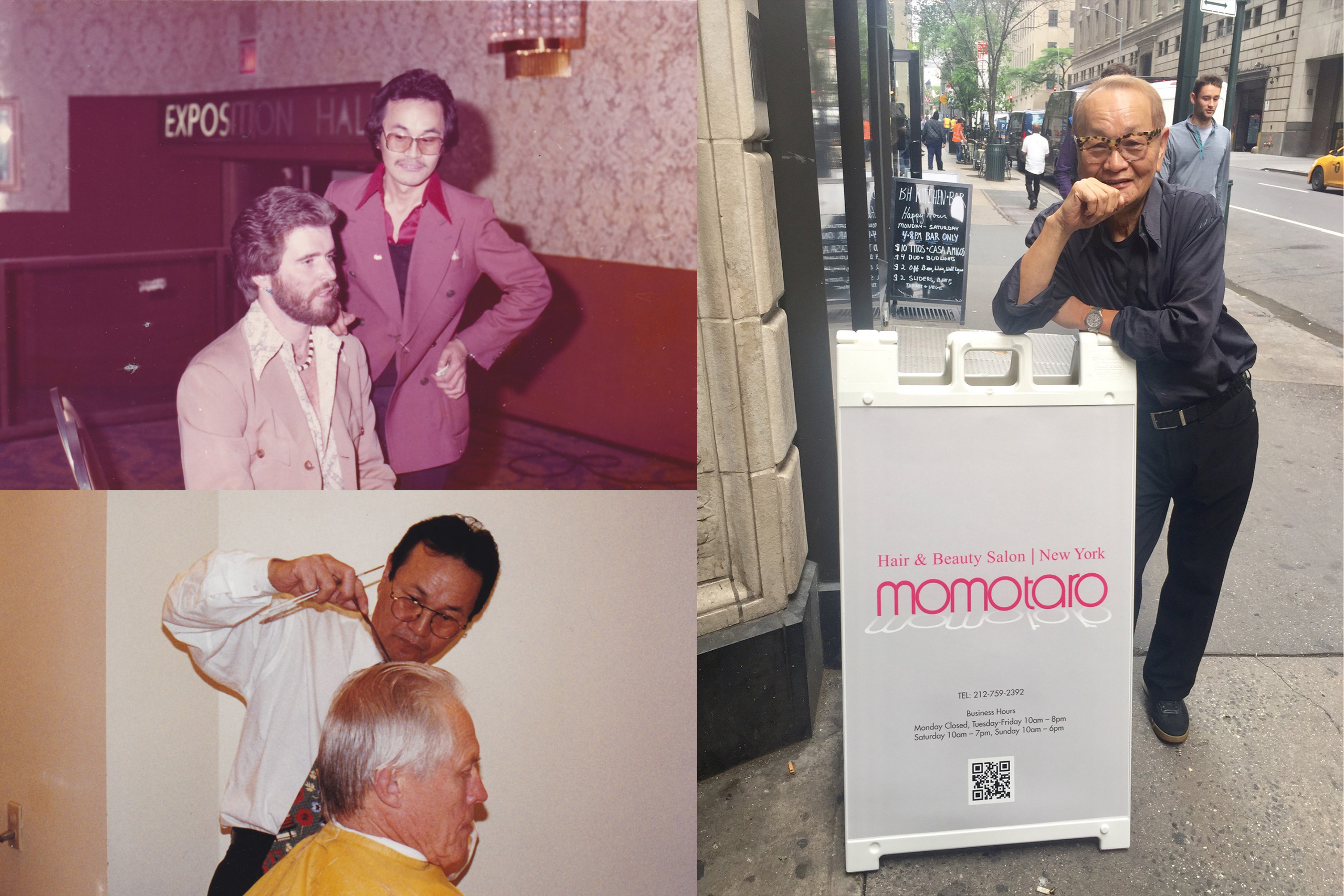
Thanks to this approach, many of our clients come back again and again.
One of the highlights of my career was that Konosuke Matsushita, the founder of Panasonic, would always visit our salon for a haircut whenever he came to New York. I told him, “I don’t want to charge you,” but he gave me a check for three or five dollars. I kept it carefully. It remains one of my most vivid memories.
Another was the late Shigeo Nagashima, the legendary manager of the Yomiuri Giants baseball team. When he visited New York for the World Series, he came to have his hair cut and took a photo with me.
Hisashi Owada, a Japanese diplomat, always brought candy as a gift when he visited.
In New York, you naturally encounter people you would rarely meet in Japan—CEOs of major corporations, top executives, all sorts of leaders.
I’m a craftsman, so I am constantly thinking about how to satisfy my clients and send them home happy. To do that, I create each style based on the feel of their hair, the way it grows, and the shape of their face.
Japanese hair is different from Western hair. That’s why you need both a scientific understanding of the hair’s characteristics and the sensitivity of a craftsman to tailor your technique to each individual.
What I sell is not just a “product” like a cut or a perm. It’s the total “service”: the experience in the salon, how well the hairstyle can be recreated at home, and the lasting impression after everything is done.
That’s why I don’t discount my work. A price that truly reflects its value is what leads to the next repeat visit.
This year marks my 53rd year in the profession. Recently, we held 50th-anniversary parties in both Tokyo and Osaka, and many people attended. It reminded me, in a very real way, how important it is to meet people in person.
Living as a Craftsman
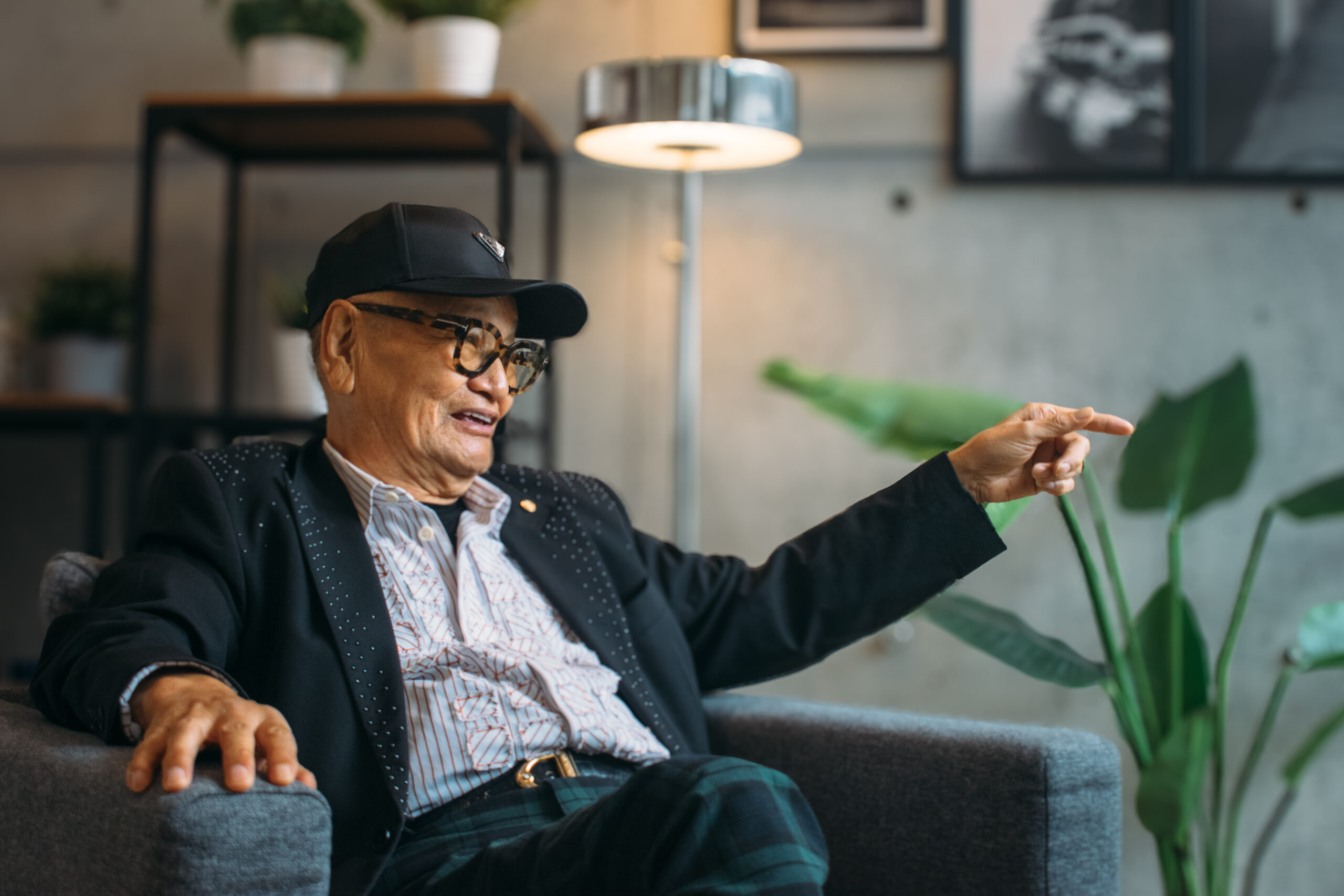
I believe life is about accumulated experience. It’s precisely because I endured those harsh apprentice years that I am who I am today.
The COVID-19 pandemic was extraordinarily difficult. It was tougher than even 9/11. During lockdown, the streets were empty. No people, no cars—just silence. Those days were pure endurance. I had no idea what the future would look like. So I told myself: as long as I can somehow make a living and stay alive through this, that will be enough. That mindset helped me get through it.
People say we now live in an “age of AI.” But here’s what I think: AI will never be able to reproduce the warmth of human hands or the unique skills that belong to an individual.
That’s why I want to tell young people: learn a craft. Master something with your own hands. That will become an asset that no one can ever take away from you.
Japan today is almost too comfortable, and that’s why I sometimes worry about the younger generation.
As for me, I have no unfinished business left.
I can honestly say, “I have given everything I had.” More than 50 years as a hairstylist.
I now have seven grandchildren and have become a great-grandfather, so part of me would like to live a little more slowly from here on out.
Still, as long as I am holding a pair of scissors, I want to live as a craftsman.
“If you have a skill in your hands, you’ll be fine, no matter what happens.”
That was my father’s teaching—and it has become the story of my life.
Experience and technique cannot be stolen.
That’s what I’m proud of.
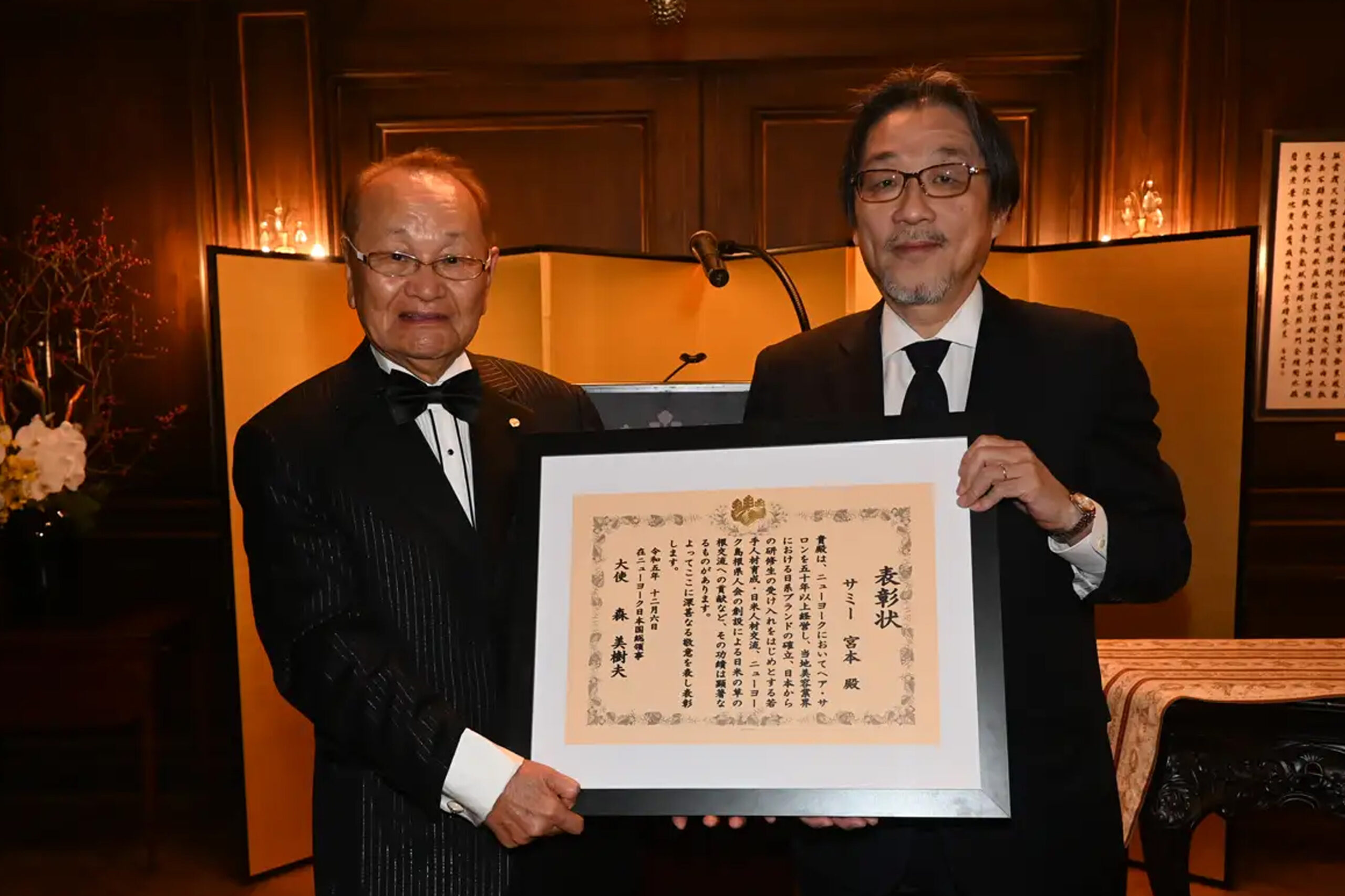
In this interview, I was genuinely astonished by how Mr.DK Sugiyama kept putting into words the vague thoughts that had simply been floating around in my head.
The value of having a skill in your hands, the hardship and pride of sustaining a business in New York for fifty years, and the conviction that in the age of AI, it is “human hands” and “real, personal service” that people ultimately choose—in this conversation, I felt as if he articulated all of it for me.
Mr. Sugiyama himself spent thirteen years of his childhood in New York, and he knows the city’s atmosphere—and the mix of “danger” and “energy” in the ’70s and ’80s—through his own body. That’s why our conversation had such depth. I could feel, “Ah, this person truly understands.”
I returned to Japan this time and reached the major milestone of my 50th-anniversary parties, but to be honest, the most enjoyable part of the trip was meeting Mr.Sugiyama and spending time in this interview. It was the first time anyone had dug so carefully into my life story and philosophy, and I am deeply grateful. Mr. Sugiyama, when you’re next in New York, I hope you’ll come and visit my home.
Hairstylist and entrepreneur / President, “momotaro salon” — Sammy Miyamoto

What struck me most in Sammy’s story was a truth that speaks directly to this age of AI. No matter how far technology advances, the human craft we call “a skill in one’s hands” is something that can never be taken away—and never fully replaced by AI.
Through more than fifty years of work, he has embodied that answer in his own life.
I also have profound respect for the courage and tenacity it took to launch a business in New York in the 1980s and steadily build success in Manhattan at a time when both public safety and the overall environment were extremely tough.
I myself spent thirteen years of my childhood in New York and still remember vividly the feel of the city and the harshness of those days. That’s why I felt such deep resonance when Sammy spoke about how difficult it is to keep going in that kind of environment.
Behind the trust he has built over half a century in New York lies not only technique but also personal integrity, a strong sense of responsibility, and a way of life focused on “polishing one’s luck.” That, I learned, is precisely why he continues to be chosen by clients even as the times keep changing.
October 2025
Reporting & editing: Daisuke Sugiyama
Project Manager: Chiho Ando
Text: Eri Shibata (Deputy Editor-in-Chief, “My Philosophy”)
Photography: Hirona Goto





